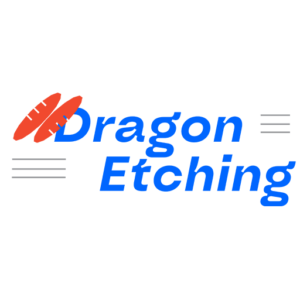Nickel silver, also known as German silver, is an alloy of copper, nickel, and zinc. It is valued for its silvery appearance and corrosion resistance, making it popular in the manufacturing of various decorative and functional items. Chemical etching of nickel silver is a process used to create intricate designs, patterns, and markings on nickel silver surfaces. Here’s a guide on commonly used methods for etching nickel silver and how to set important parameters for effective nickel silver etching:
Commonly Used Nickel Silver Etchants
- Ferric Chloride (FeCl3)
Applications:
- Jewelry: Nickel silver is used in the production of jewelry items. Etching can be employed for decorative purposes and personalization.
- Decorative Items: Items like plates, plaques, and artistic pieces often undergo etching for enhancing their aesthetic appeal.
Setting Parameters:
- Temperature: Nickel silver etching with ferric chloride is typically performed at temperatures ranging from 35°C to 45°C (95°F to 113°F).
- Concentration: A common concentration is around 40-45% ferric chloride in water. Ensure thorough mixing for consistent results.
- Etching Time: The etching time can vary based on the depth and complexity of the design but often falls within the range of 5-30 minutes.
- Agitation: Utilize an agitation mechanism within the etching equipment to maintain even etching and prevent the accumulation of byproducts.
Setting Parameters in a Nickel Silver Etching Operation
For an effective nickel silver etching operation using ferric chloride as an example:
Temperature:
- Confirm and set the etching machine’s temperature control settings within the specified range of 35°C to 45°C.
Concentration:
- Measure the required amount of ferric chloride accurately and mix it with water to achieve the desired concentration (e.g., 40-45%). Use calibrated instruments for precision.
Etching Time:
- Determine the appropriate etching time based on the complexity and thickness of the nickel silver. Start with a shorter time and adjust as needed. Typically, a 10-15 minute initial test run is a good starting point.
Agitation:
- Ensure that the etching equipment is equipped with an agitation system to maintain proper mixing of the ferric chloride solution throughout the etching process.
Safety:
- Prioritize safety by wearing appropriate personal protective equipment (PPE) such as gloves, safety goggles, and lab coats. Maintain a well-ventilated workspace with safety showers and eyewash stations.
Waste Disposal:
- Dispose of used etchant solutions following local regulations, as ferric chloride is often considered hazardous waste. Proper handling and disposal are essential.
If you have an Nickel silver etching project that you need help with, please contact us

